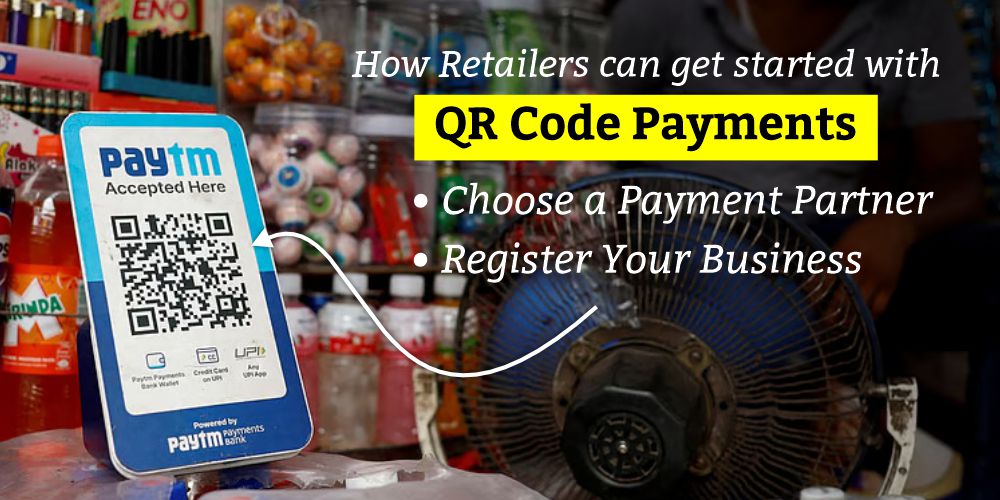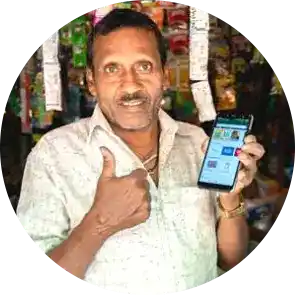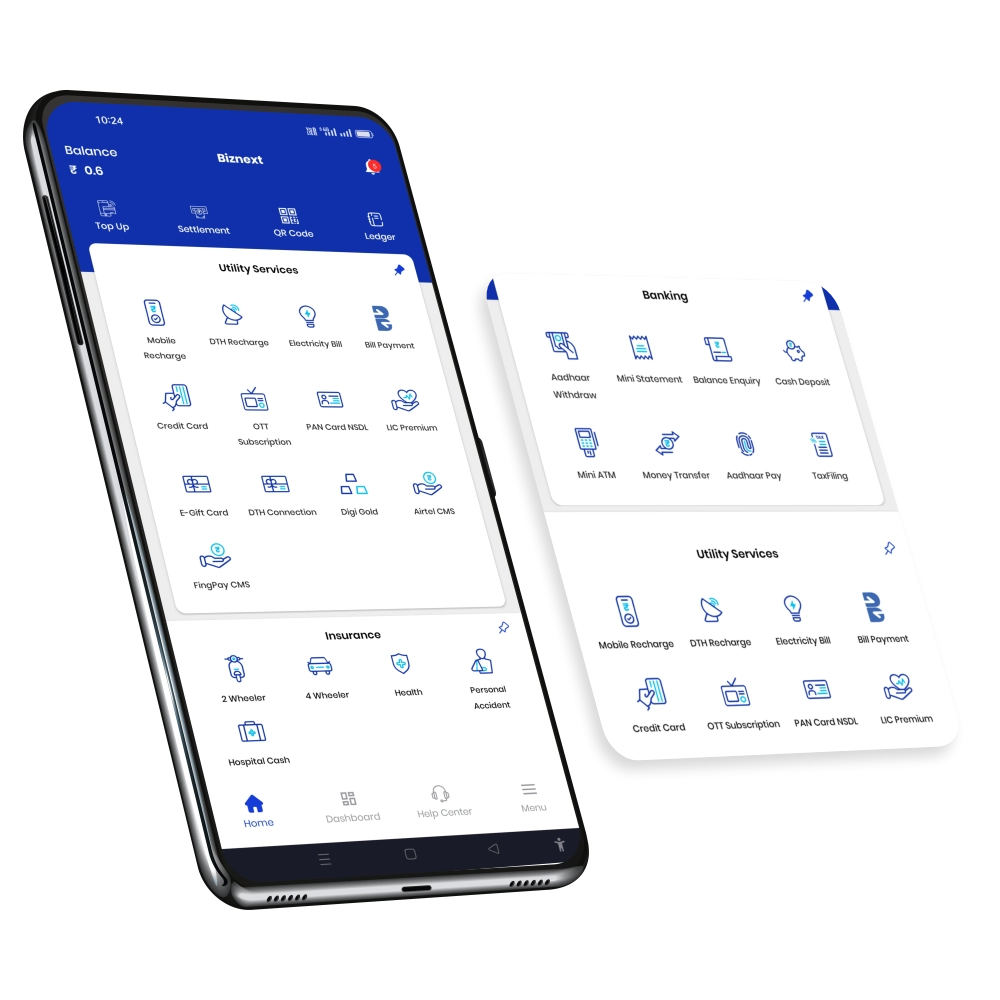In recent years, India has seen a massive transformation in how people pay and get paid. From metro cities to small villages, the shift from cash to digital payments has been faster than ever before. Among all digital methods, QR code payments have emerged as the easiest, fastest, and most inclusive way to go cashless.
According to official data, over 67.8 crore QR codes are now active in India, a number that has more than doubled in just 18 months. This shows how widely QR payments have been accepted by merchants, small shop owners, and customers alike.
In this article, we’ll explore how QR code payments are reshaping India’s retail landscape, why they are so popular, how they work, their benefits and challenges, and how Biznext is helping small businesses and retailers confidently embrace this revolution.
What Is a QR Code Payment?
QR stands for “Quick Response.” It is a two-dimensional barcode that can be scanned using a smartphone camera or a payment app.
In simple terms, when a customer wants to pay a shop owner, they open their UPI-enabled app like Paytm, PhonePe, Google Pay, or BHIM, scan the merchant’s QR code, enter the amount, and complete the payment instantly.

The transaction happens through India’s Unified Payments Interface (UPI) — a system managed by NPCI (National Payments Corporation of India) that connects different banks and apps to make instant money transfers.
There are two main types of QR codes used for payments in India:
- Static QR Codes: These are fixed codes printed on boards or stickers. The merchant uses one QR for all payments. Customers manually enter the amount before paying.
- Dynamic QR Codes: These are generated freshly for each transaction with the exact amount. They appear on POS screens or apps. Dynamic QR codes reduce human error and are safer for higher-value transactions.
India also uses a common standard called BharatQR, launched by NPCI, Visa, MasterCard, and RBI to unify QR-based payments across different banks and apps.
The Rise of QR Code Payments in India
The success of QR code payments in India didn’t happen overnight. It is the result of strong digital infrastructure, government initiatives, and customer trust in platforms like UPI.
Let’s understand the key reasons behind this growth:

- Affordable and Simple: Unlike card machines, QR codes don’t need expensive devices or maintenance. A printed QR code is enough to start accepting payments.
- High Smartphone Penetration: With over 750 million smartphone users, India is well-equipped to adopt QR-based transactions.
- Government Push for Digital India: Campaigns such as “Digital India” and “Make in India” have encouraged the adoption of digital payments among businesses of all sizes.
- UPI’s Success: UPI has become the backbone of Indian digital payments, processing over 13 billion transactions per month in 2025.
- Trust and Habit: Small shop owners, who once preferred cash, now encourage customers to “scan and pay” because it’s quick and reliable.
This combination of simplicity, accessibility, and security has turned QR codes into a symbol of India’s cashless economy.

Benefits of QR Code Payment for Retailers and Small Businesses
For shop owners, digital payments are no longer a luxury; they are a necessity. Here are the top benefits QR codes offer to Indian retailers:
1. Low Setup Cost
Merchants don’t need to buy costly card machines or maintain any hardware. Printing a QR code costs next to nothing.
2. Faster Checkout
Transactions happen within seconds. Customers just scan, pay, and move on — reducing waiting time at counters.
3. Accept Payments from Any App
Through UPI and BharatQR, a single QR code can accept payments from multiple apps — Paytm, PhonePe, Google Pay, BHIM, and even banking apps.

4. Instant Settlement
Money gets credited directly into the merchant’s linked bank account, usually in real time, improving cash flow.
5. Safety and Transparency
Since payments are digital, both merchant and customer receive instant confirmations and transaction records, which reduces the chances of fraud or argument.
6. Cleaner Recordkeeping
All payments get recorded automatically, making it easy to track income, manage books, and file taxes.
7. Customer Trust and Satisfaction
Modern customers expect digital options. Shops displaying QR codes appear professional and trustworthy.
8. Enables Business Growth
According to a recent Uniqode report, 62% of Indian businesses believe QR code-based initiatives will help them increase revenue in 2025.

Also Read: Best financial distributorship business
Real-Life Examples from India’s Retail Market
Today, QR codes are everywhere, not just in malls or branded outlets, but also at roadside stalls, tea vendors, vegetable markets, and small town shops.
For example:
- A fruit seller in Patna now accepts UPI payments through a static QR board, avoiding the need to handle loose change.
- Local kirana stores in Dombivli use QR codes from Biznext-integrated partners to accept payments and record sales digitally.
- Even parking lots, bus services, and small tuition teachers now prefer QR-based payments because it’s fast and traceable.
QR codes are not just for accepting money; businesses use them for bills, loyalty programs, online catalogues, and even linking to their social media or feedback forms. This flexibility makes QR technology a long-term digital asset for retailers.
Challenges and Safety Concerns for QR Payment
Despite their popularity, QR codes come with certain challenges that retailers should be aware of.

1. Fake or Tampered QR Codes
Fraudsters may place a fake QR sticker on top of a genuine one to divert payments. Merchants should regularly check their QR display and never share codes through unknown links.
2. Connectivity Issues
Sometimes poor internet connection can delay payment notifications. Retailers should ensure stable mobile data or Wi-Fi.
3. Lack of Awareness
Some customers and older shop owners are still not fully comfortable using digital payments. Training and awareness are essential.
4. Customer Data Protection
Dynamic QR systems may collect transaction data. Businesses should ensure they work with verified providers like PhonePe, BharatPe, Google Pay, PayTM, Amazon Pay or NPCI-compliant partners to maintain data security.
5. Multiple QR Confusion
Many shops display several QR payment codes (one for Paytm, one for Google Pay, etc.). A unified BharatQR or Biznext multi-app QR is better for simplicity and trust.


How Retailers Can Get Started with QR Code Payments
Setting up QR payments for your business is easier than you think. Here’s a simple guide:
Step 1: Choose a Payment Partner
Select a trusted partner like your bank or any UPI-integrated provider that offers merchant QR services.
Step 2: Register Your Business
Provide your shop details, PAN, bank account, and identity proof to generate your merchant ID and QR code.
Step 3: Get Your QR Code Printed
Once generated, print it on a durable, high-quality standee or board. Avoid low-quality prints or reflective surfaces that make scanning difficult. Also UPI provider gives you a free QR code with a stand.
Step 4: Display Clearly at Your Counter
Place the QR code where customers can see it easily, near the billing counter, not behind glass or clutter.

Step 5: Educate Your Staff
Ensure everyone knows how to use it and verify payment confirmations before completing sales.
Step 6: Track Transactions
Use your Biznext or bank dashboard to monitor daily transactions, identify peak hours, and manage settlements.
Also Read: Small Business Ideas in India
Why Dynamic QR Codes Are the Future
Dynamic QR codes are gaining popularity because they offer more features and safety:
- Each code is unique for each transaction.
- They auto-fill payment details, avoiding manual errors.
- They can include business branding or campaign details.
- They allow transaction analytics, such as frequency and average spend.
For small retailers using Biznext, dynamic QR codes can be integrated with loyalty programs, utility payments, and bill collection services, turning a simple QR into a smart business tool.

How Biznext Is Empowering Retailers in the QR Revolution
At Biznext, we understand that not every shop owner is tech-savvy, but everyone deserves access to digital growth. Biznext offers QR code payment solutions designed especially for local entrepreneurs, agents, and retailers.
What Makes Biznext Different?
- Simple Setup: Merchants can get a QR code in minutes, no complicated paperwork or device installation needed.
- All-in-One Integration: Accept UPI, AEPS, bill payments, and domestic money transfers under one dashboard.
- Safe & Verified System: Biznext follows NPCI and RBI guidelines to ensure all payments are secure and traceable.
- Local Language Support: Merchants can access dashboards and support in their regional language, making digital adoption easier.
- Training and Marketing Help: Biznext provides materials and guidance to help shops promote digital payments among customers.
- Revenue Opportunities: Beyond accepting payments, retailers can earn commissions through value-added Biznext services like recharges, bill payments, or AEPS withdrawals.
By helping thousands of retailers across India go digital, Biznext is contributing to the broader Digital India mission and building a safer, smarter payment ecosystem.
Future of QR Payments in India
The future of QR payments looks brighter than ever. The Reserve Bank of India (RBI) and NPCI are continuously upgrading UPI infrastructure and setting stricter security norms to make QR transactions more reliable.
We can expect:
- Offline QR payments that work without internet in rural areas.
- QR-linked loyalty and marketing campaigns for small shops.
- AI-powered smart QR codes that analyse customer behaviour.
- QR-enabled receipts and dynamic billing for businesses of all sizes.
Experts predict that India will remain the largest QR payment market in the world by 2030, leading global innovation in digital payments.

For retailers, this means endless opportunities, better sales, reduced cash handling, and higher customer satisfaction.
Conclusion
QR code payments are no longer just a trend; they are the new foundation of India’s retail payment system. They bring speed, safety, and convenience to every transaction, whether it’s a supermarket purchase or a cup of chai.
For small shop owners, adopting QR payments can open doors to more customers, higher trust, and better recordkeeping.
And with a partner like Biznext, you can embrace this digital change easily and securely — without any technical hurdles. So, if you haven’t already, now is the perfect time to go digital with Biznext QR and be part of India’s digital retail revolution.
Also Read: How To Scan Aadhaar Card Using QR Code?







